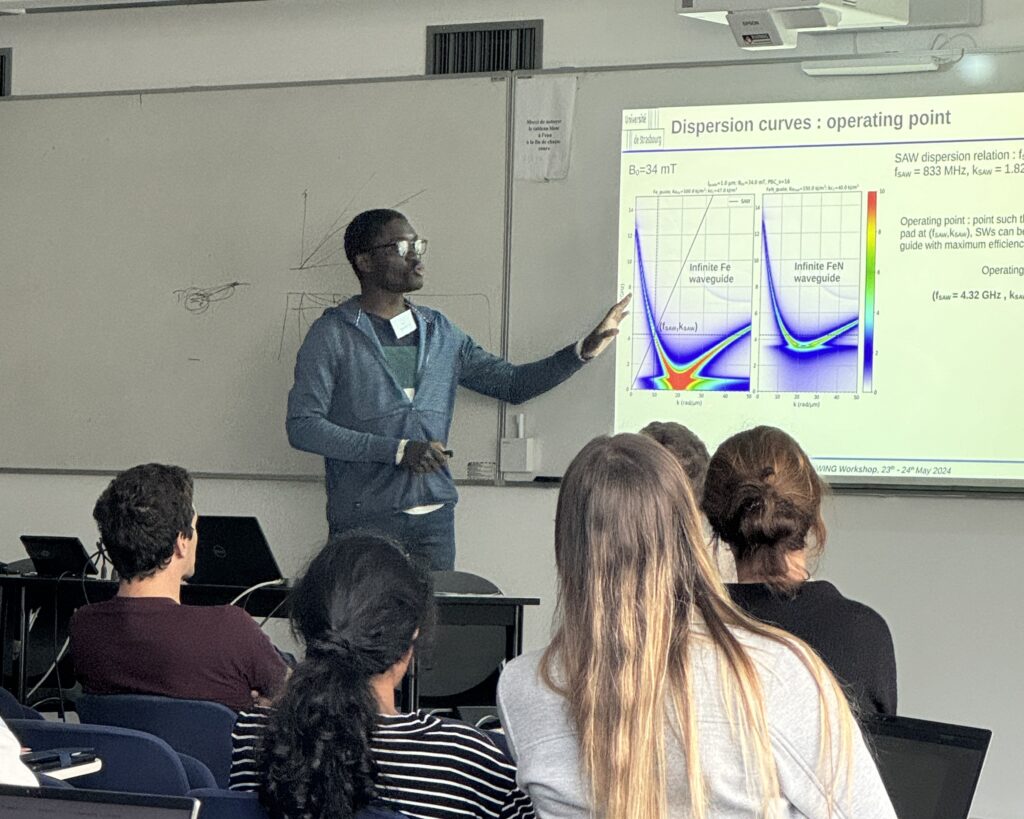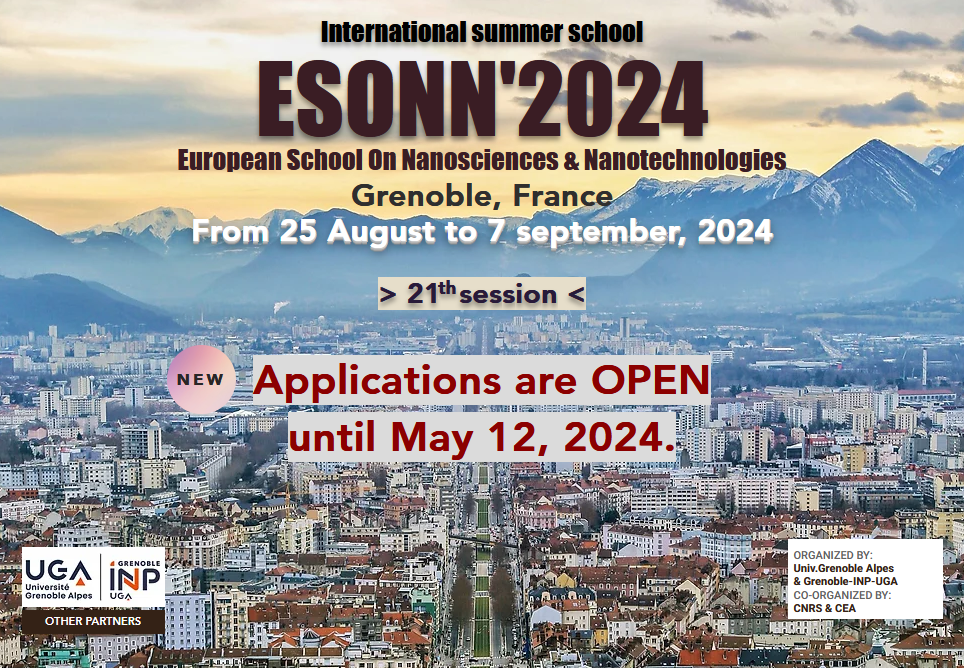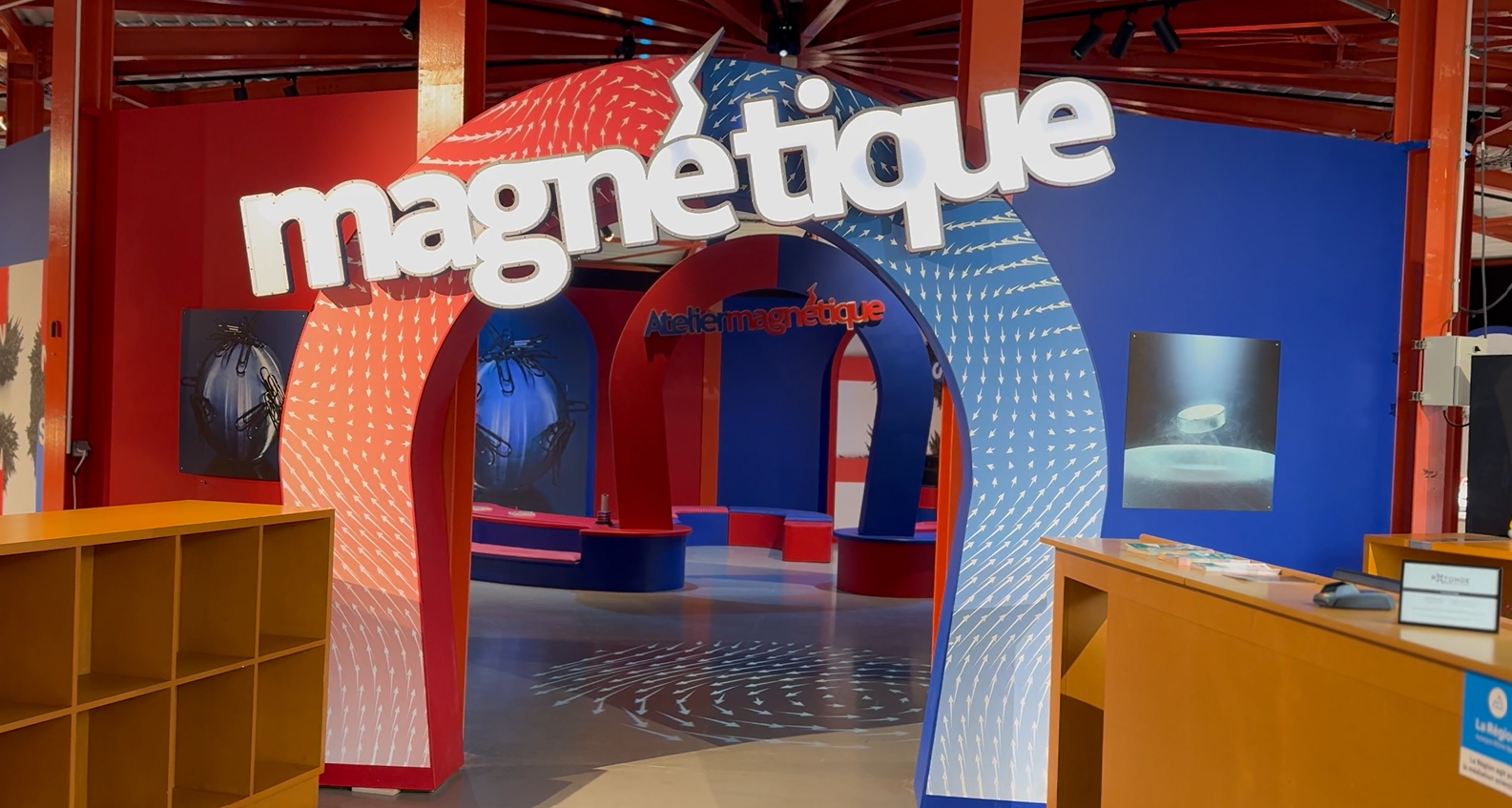
Feedback on the first progress meeting of the Targeted SWING Project
A look back at the first meeting of the Targeted SWING Project which was held on May 23 and 24, 2024 at the IPCMS in Strasbourg
The event took place in the form of a mini-workshop open to the entire community, welcoming six contributions from outside the SWING consortium. It brought together a significant part of the Magnonic community in France, with 34 participants present and around twenty people connected remotely.

4 areas of work of the SWING project were discussed:
In the area of “Reconfigurable Magnonics”, the research mentioned by members of the C2N Palaiseau laboratory focused on the non-reciprocal propagation of spin waves in synthetic antiferromagnetic stacks, providing new perspectives on the directional control of spin waves. spin. Furthermore, GEMAC Versailles discussed spin dynamics in the magnetic textures of ribbons composed of hard and soft magnetic bilayers, revealing complex and promising behaviors for advanced applications. Finally, studies from IPCMS Strasbourg on the magnonics of corrugated systems were mentioned and opened innovative avenues for the engineering of spin wave propagation properties.
The axis of “nano-magnonics” where the results reported concerned the shaping of spin wave beams (IMTA Brest) and the detection of spin waves by magnetoresistive method (IPCMS Strasbourg), both at scale nanometric
In the “Hybrid Magnonics” axis, several presentations dealt with magneto-elastic couplings: the magnetic and elastic properties of a FeRh compound with phase transition (INSP Paris), coupled magnon-phonon modes in periodic structures (LSPM Villetaneuse), the acoustic excitation of a magnetic vortex (SPEC Saclay), the conversion between spin waves and surface acoustic waves (INSP Paris and IPCMS Strasbourg), as well as the theory of quantum coherence in coupled magnon-phonon systems -photon (CESQ Strasbourg).
Finally, on the “Implementation of magnonics” axis, the possible use of strongly non-linear spin waves for neuromorphic calculation (SPEC Saclay) was discussed, as well as an analysis of the performance of microwave devices with spin waves. (Albert Fert Palaiseau Laboratory).


